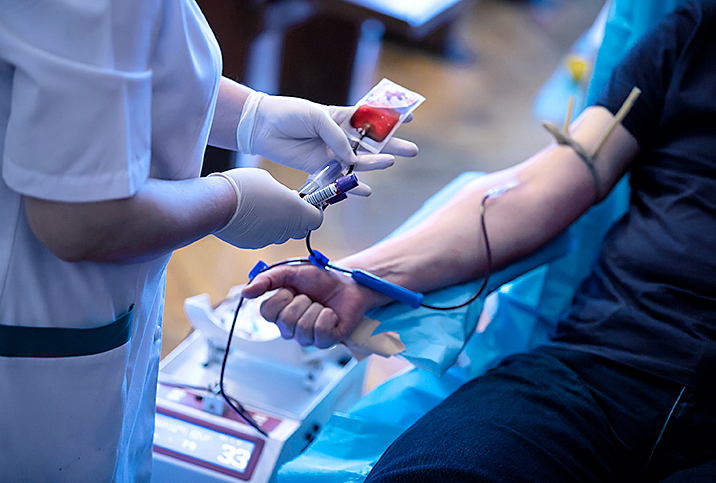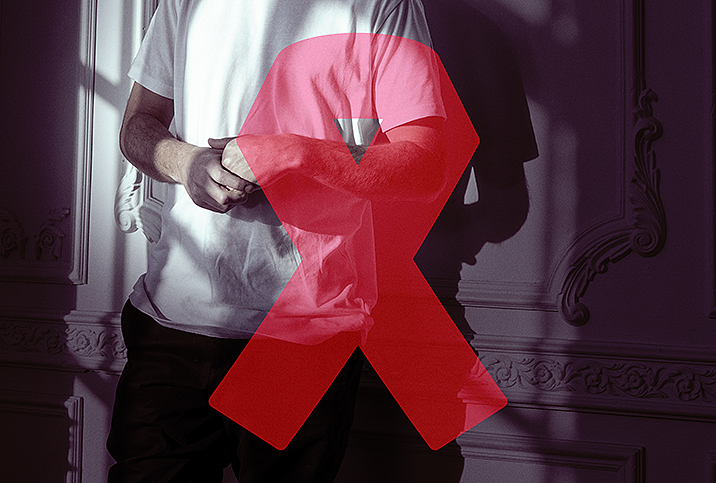How You Can Save a Life Today

The American Red Cross is experiencing its first blood crisis, marking the direst shortage of stored blood in more than a decade. With less than a day's supply of critical blood types on hand, doctors have to choose which patients receive what is available.
Prior to the pandemic, between 2-3 percent of people in the U.S. donated blood annually, and COVID-19 has only decreased donations due to canceled blood drives and reduced staffing. There are many reasons people are reluctant to donate, but according to a 2019 survey carried out by the American Red Cross, many people attribute their decision to having "never really thought about it" or just "being too busy."
Perhaps it's time to slow down and start thinking about it.
Who can donate?
In order to donate, you need to be healthy and deemed unlikely to have a transmissible disease. The American Red Cross lists criteria you have to meet in order to donate: You need to be at least 17 years old (or 16 with parental consent in some states), and you must weigh at least 110 pounds (although there's no set upper limit) and have a hemoglobin level of 12.5g/dL for women and 13.0g/dL for men.
Even though the American Red Cross tests each donation for diseases, such as HIV and hepatitis C, the Food and Drug Administration (FDA) has set strict eligibility criteria for men who have sex with men (MSM)—and also women who have sex with those men—because of the fear of inadvertently infecting a patient with HIV. From 1985 to 2015, MSM were completely banned from donating blood. This changed in 2015, allowing MSM to donate after one year of abstinence, an admittedly high request to make a donation.
With advances in testing and, importantly, decreases in prejudice, these rules are changing. In April 2020, the pandemic's effect on donations indicated donations were down by 10 percent, and that led the FDA to reduce the time for MSM sexual activity from 12 months to three. Then, in December 2020, the American Red Cross, along with other blood donation and LGBTQIA+ organizations, launched a pilot study to evaluate alternatives to the current MSM policy.
What's it like to donate blood?
While there are many places to donate blood, the American Red Cross is the most well-known, accounting for 40 percent of the nation's blood supply. First-time donors can make an appointment online.
After the check-in at your appointment, a nurse will ask questions about your eligibility, check your vitals and test your hemoglobin by pricking your fingertip.
Most people initially donate whole blood, a 10-minute needle-in-the-arm donation for all blood types. Once your blood is processed and you learn your blood type, you can then see which of the four donation options you'd like to continue with.
Whole blood donations
This is where people usually begin their donation journey. Anyone with any blood type can donate whole blood. It is also the most flexible of the donation types since the blood can be given to a patient whole or separated into its components of red blood cells, plasma and platelets. The donation process takes about an hour and you can do it every 56 days. Whole blood is given to trauma patients and people undergoing surgery.
Power Red donations
This option is only for donors with O+, O-, A- or B- blood who also meet higher criteria for weight and hemoglobin levels. The donation process takes longer—about an hour and a half—and you can't donate again for 112 days.
In a Power Red donation, the donated pint of blood will have the red blood cells spun out of it to be given to a patient; the remaining platelets and plasma are returned to the donor. This process is done twice, using one IV.
Red blood cells are used for general blood loss, trauma patients, newborns and moms during a traumatic birth, and people with sickle cell anemia.
Platelet donations
Platelets allow blood to clot and are critical for cancer and organ transplant patients. Only those with A+, A-, B+, O+, AB+ or AB- blood are invited to donate.
An apheresis machine is used to collect platelets, so you will have an IV in both arms as blood is collected on one side and everything except platelets is returned on the other. This kind of donation takes about three hours and you can do it every seven days.
Plasma donations
This option is only for donors with AB+ or AB- blood. Plasma is also donated through an apheresis machine that returns red cells and platelets to the donor through an IV in the opposite arm from which it was taken. The process takes a little over an hour.
Citrate reactions for some donors
Around 7 percent of donors will have a short-lived reaction to the anticoagulant citrate, which is used when blood product is returned to the donor during Power Red, plasma or platelet donations.
The reaction usually starts with a cool sensation or metallic taste in the mouth, followed by tingly lips. Donors then may feel intensely cold to the point of shivering. These sensations stop as soon as the infusion ends. You will probably be offered chewable calcium, which often decreases the sensations.
Some insider tips from a donor
Eiley Hartzell-Jordan, a 21-year-old assistant manager at a coffee shop in Raleigh, North Carolina, is passionate about donating blood.
"I know that for some, donating blood can be a scary thought," Hartzell-Jordan said. "It definitely was for me the first time. But once I realized the impact of this simple act, I knew I had to be a regular donor. Donating blood literally saves lives. Even if it hurts or I don't feel well after, I saved a human life. Blood donors are real-life superheroes."
Here are her insider tips:
- Go to the appointment well-hydrated and keep drinking plenty of water the following day.
- Download the Blood Donor app after your first appointment. On the app, you can make or change appointments, see a record of your vitals, keep track of your donations and when you can donate again, and learn in what city your blood was used. You can also do a Rapid Pass questionnaire the morning of your next appointment, making your check-in much faster.
- Make your first appointment for later in the day so you can rest immediately afterward.
- Take an iron supplement for two months after each donation to replenish your body. For best absorption, take iron along with vitamin C but separately from calcium. Eat iron-rich, nutrient-dense foods.


















